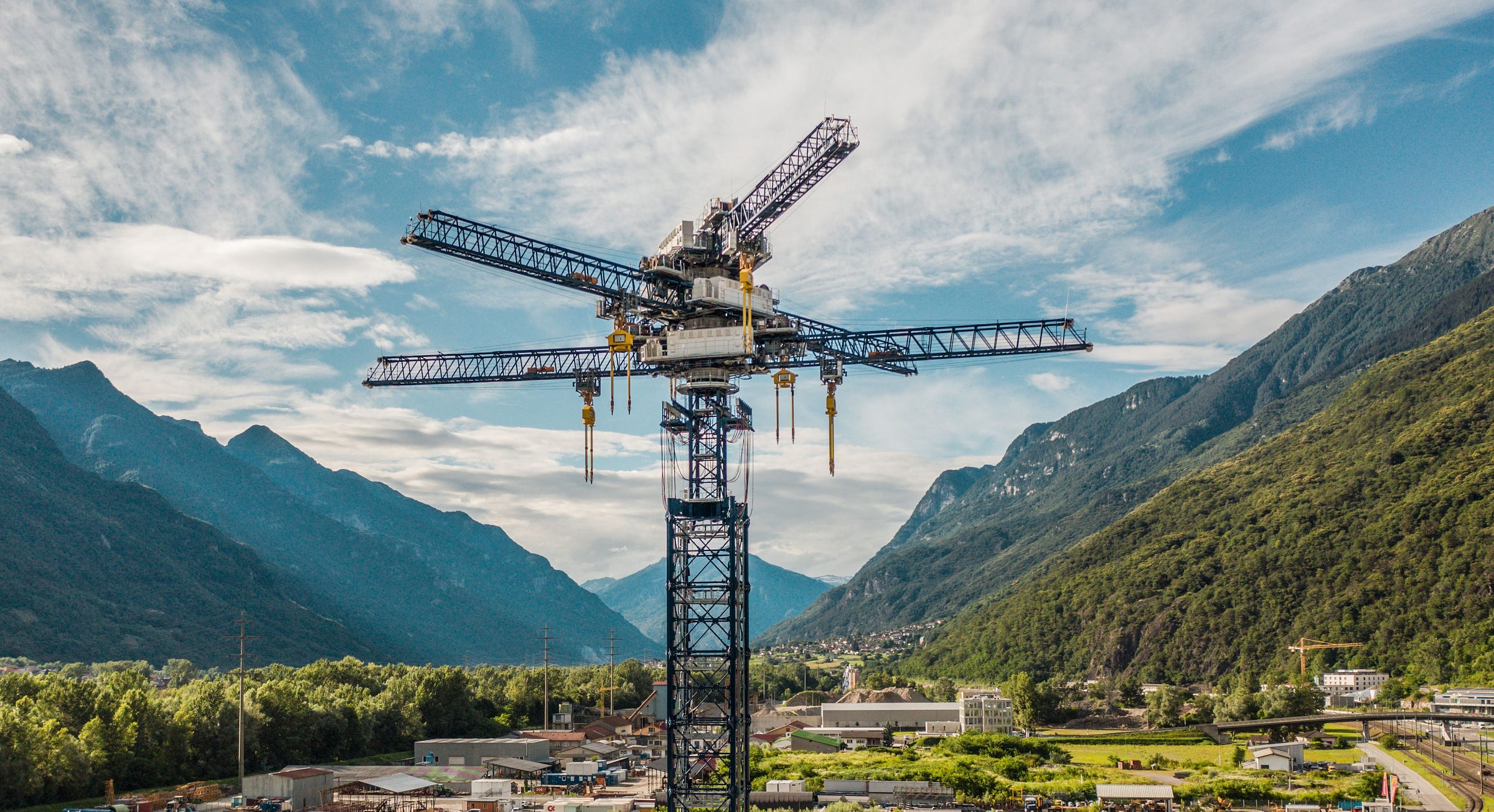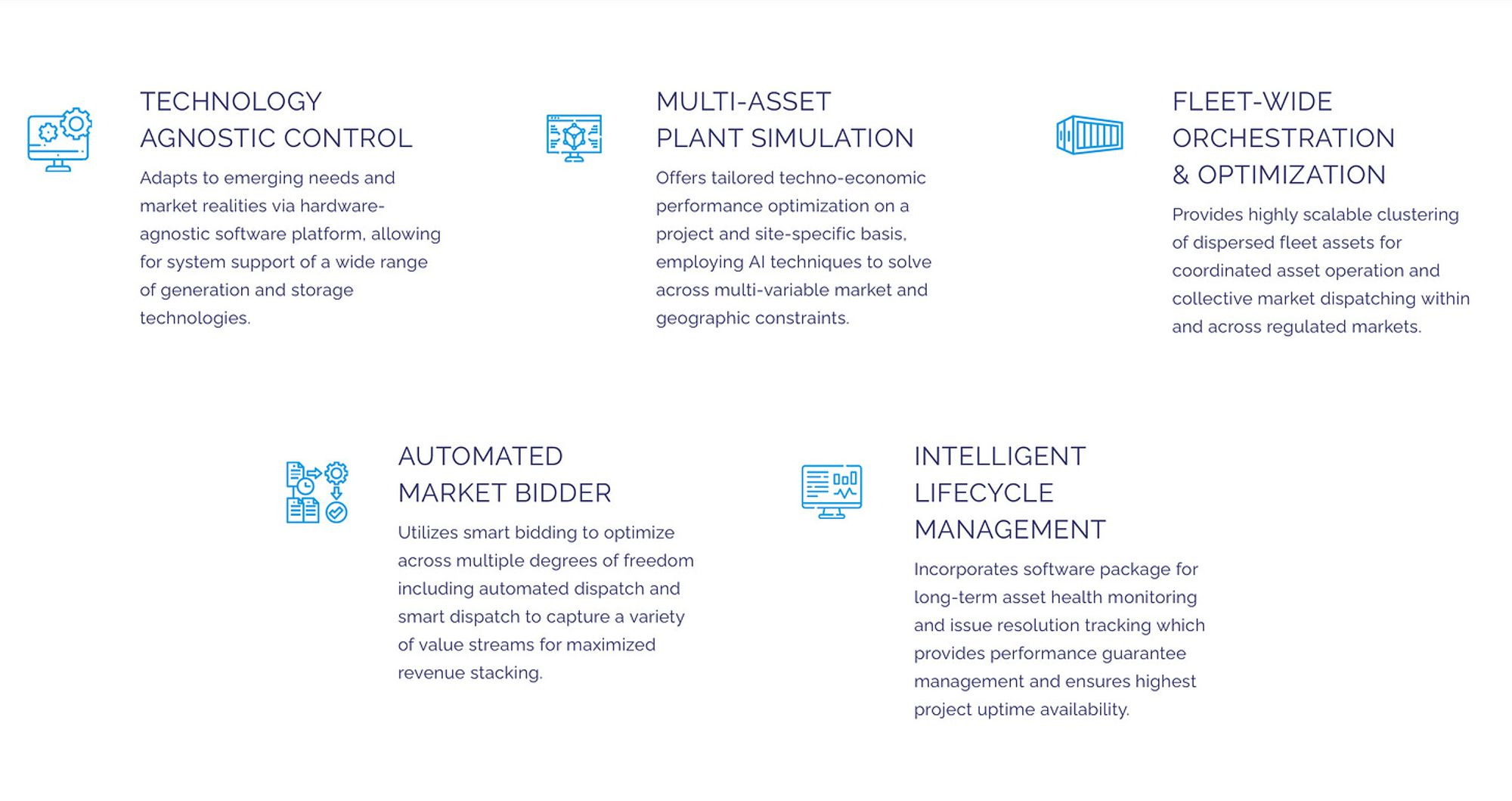The Pledge
Many accuse us here at Currently Speaking of being cynics.1 They’re not wrong, but experience has taught us to be immediately wary of start ups flush with SoftBank money.2 It’s not that SoftBank hasn’t invested in some incredibly successful start ups (it clearly has), it’s that SoftBank has a habit of indiscriminately pumping piles of money into anything vaguely resembling a tech company, especially if that company has a sociopathic charismatic founder.3
Enter Energy Vault, a company seeking to revolutionise the energy industry with 3D renders of megalithic warehouses in the desert. Inside of these megalithic warehouses are renders of hundreds of blocks of recycled concrete. The premise of Energy Vault is that excess energy from solar and wind will be used to lift these blocks high above the ground, storing potential energy into these blocks until they can be released at a later time, converting that potential energy into kinetic energy which can be used to generate electricity (hopefully via some kind of amazing Rube Goldberg contraption).
The core concept of Energy Vault — utilising the potential energy of some medium and converting it into kinetic energy for electricity generation — is not a novel concept; pumped hydro, compressed air storage, and The Gordonator all operate on the same principal.
But if the notion of a complex series of lots of (allegedly maintenance free) cranes lifting and lowering 30 ton concrete blocks sounds off, you’ve probably worked in an office building.4
The website seems to spend most of its time convincing you to add your money to Softbank’s pile, or claiming victory over short-sellers, rather than explaining the technical details of the technology.5 This could simply be a case of cautiously defending their intellectual property… or an enormous red flag.
The Turn
When developing storage there are two important metrics — size (maximum power delivery, specified in kilowatts or Megawatts) and capacity (the amout of energy stored, specified in kilowatt-hours or Megawatt-hours). Duration (measured in hours) is the ratio of these two metrics.
The current crop of batteries that have been deployed at utility scale and “behind the meter” at households and businesses are typically relatively short duration — between 1 and 2 hours.
The driver of this has largely been economics. Increasing duration with the current commercial chemistries is expensive, and the primary mechanisms of generating revenue for these assets is short term arbitrage or ancillary services (which are driven by size, not capacity). That being said, there is evidence to suggest that the economics of storage are shifting — for example arbitrage periods are extending (currently only in the worst cases), and valuable ancillary services like regulation frequency control benefit from capacity.
However one of the looming spectres on the horizon is the threat of energy droughts or dunkelflautes in a renewables heavy system. While we readily make fun of the kinds of commentators who earnestly say “when the wind doesn’t blow and the sun doesn’t shine”… but yes, literally this situation. There’s two key questions around these energy droughts — how long and how deep6.
Two helpful papers which are instructive on this topic include one from Griffith University looking at the duration and severity in the NEM and one looking the issue in Europe. The general conclusions are that dunkelflautes are likely to be less severe than what many others have previously suggested, but they still need to be planned for and addressed.
For obvious reasons batteries with sub-2 hour durations are going to be of limited use here, so there’s a strong need for longer duration storage options, which are hopefully somewhat economic7.
So yes, there’s a huge need for longer duration storage, one which can be placed nearly anywhere and with lower costs than the current generation of lithium chemistry batteries.
The Presti… uh, maybe not
So, after espousing the myriad benefits of dropping heavy shit from cranes concrete storage — namely that the LCOE and lack of capacity degradation were big improvements over [chemical] battery storage — in 2022 the company announced, duh-dun, a pivot to short duration. And what is their short duration solution?
Surprise! It’s a fucking chemical battery.
There’s lots of buzzwords and cute infographics to accompany their vague technical description — but none of these are technical innovations or unique to Energy Vault’s solution. What is unique is the complete lack of technical specifications - size, capacity, chemistry. You know, the things that might help market operators or investors make an informed decision about why they should believe that Energy Vault can provide a technology.
If the idea of hundreds of concrete blocks flying through the air, or the hyped up Softbank investment didn’t already ring alarm bells, surely the pivot to run-of-the-mill battery storage does.
And though Energy Vault is still moving along with the concept of concrete batteries, there’s something that feels a little off about the whole endeavour.
They remind me of my other favourite shiny vapourware render-heavy company Alpha, which makes promotes stunning retro-style EVs, but sends out at least weekly emails promoting the benefits of investing. Not only does my inbox smell of desperation, but they’ve repeatedly missed production deadlines and promises (while constantly adding new models to their render collection).
There’s a clear need for cheaper, longer duration (and safer) energy storage, and we hope that Energy Vaults successes render our skepticisms invalid.
But at this stage we think investing in wave generation might be a more realistic bet. Or maybe reboot that Kickstarter campaign for The Gordonator.
Things Happen
Industry which has always relied on heavily subsidised electricity costs conducts their bi-annual reminder that they really, really need cheap electricity, but gets confused about gas peaking costs.
Snowy 2.0 is really not having a good time. Currently Speaking is launching an official campaign for Malcolm Turnbull to become personally involved in the fight for Florence.
We strive for being realistic.
For the uninitiated or blissfully sheltered, SoftBank is a huge Japanese tech focussed investment fund.
Genuine props to SoftBank for trying to make the term *proptech* a thing, rather than admitting that WeWork is a commercial real estate company with free beer and a cash problem.
Why is there always one elevator inexplicably out of service for an extended period of time?
In case it’s not obvious, there’s rather a bit more to the whole thing than just “lifting heavy shit and dropping it later”. These details seem kind of important.
Important questions for a range situations.
Leaving aside the discussion of storage alternatives, namely thermal generation. That’s a topic for another week.







I know it's after the fact, but feel free to link to this comment if anyone asks you to support your claim that some people accuse you guys of being cynics... :)
"Industry which has always relied on heavily subsidised electricity costs"
Don't get me started on how they don't pay for all that lower contingency FCAS they make us procure...